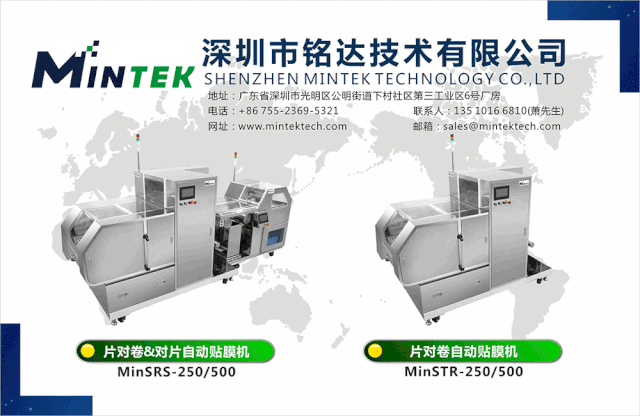【Background Information】The size of the PCB is limited by the capabilities of the electronic processing production line equipment. Therefore, suitable PCB sizes should be considered during the product system design.
(1) The maximum PCB size that SMT equipment can mount is based on the standard size of PCB materials, most of which is 20″×24″, or 508mm×610mm (rail width).
(2) Recommended sizes are those that are more compatible with the various devices in the SMT production line, which helps to maximize the production efficiency of each device and eliminate bottlenecks.
(3) For small-sized PCBs, they should be designed as a panel to improve the overall production efficiency of the entire production line.
【Design Requirements】
(1) Generally, the maximum size of the PCB should be limited to the range of 460mm×610mm.
(2) The recommended size range is (200~250)mm×(250~350)mm, with an aspect ratio of < 2.
(3) For PCBs smaller than 125mm×125mm, they should be designed as a panel to a suitable size.
2. PCB Shape
【Background Information】SMT production equipment uses rails to transport PCBs and cannot transport PCBs with irregular shapes, especially those with notches in the corners.
【Design Requirements】
(1) The shape of the PCB should be a regular square with rounded corners.
(2) To ensure stability during transportation, irregularly shaped PCBs should be converted to standard square shapes using paneling, especially ensuring that any corner notches are filled to avoid jamming during wave soldering.
(3) Pure SMT boards are allowed to have notches, but the size of the notch should be less than one-third of the length of the edge it is on. For those exceeding this requirement, the design process edge should be filled.
(4) The edge design for gold fingers should include a chamfer on the insertion edge, and both sides of the insertion board should also be designed with a 1~1.5×45° chamfer to facilitate insertion.
Advertisement

3. Transport Edge
【Background Information】The size of the transport edge depends on the requirements of the equipment’s transport rails, such as printers, pick-and-place machines, and reflow soldering ovens, which generally require a transport edge of more than 3.5mm.
【Design Requirements】
(1) To reduce PCB deformation during soldering, the long edge direction of non-panelized PCBs is generally taken as the transport direction; for panelized PCBs, the long edge direction should also be taken as the transport direction.
(2) Typically, the two edges of the PCB or panelized board in the transport direction are considered as transport edges, with a minimum width of 5.0mm. No components or solder points are allowed on either side of the transport edge.
(3) There are no restrictions on non-transport edges from the SMT equipment perspective, but it is best to reserve a 2.5mm component exclusion zone.
4. Positioning Holes
【Background Information】Many processes such as panel processing, assembly, and testing require accurate positioning of the PCB, so positioning holes are generally required.
【Design Requirements】
(1) Each PCB should be designed with at least two positioning holes, one circular and the other elongated, with the former used for positioning and the latter for guiding.
The diameter of the positioning holes has no special requirements and can be designed according to the factory’s specifications, with a recommended diameter of 2.4mm or 3.0mm.
Positioning holes should be non-metalized holes. If the PCB is a punched PCB, the positioning holes should be designed with a hole plate to enhance stiffness.
The length of guiding holes is generally taken as twice the diameter.
The center of the positioning holes should be more than 5.0mm away from the transport edge, and the two positioning holes should be as far apart as possible, preferably located at the diagonals of the PCB.
(2) For mixed PCBs (PCBA with plugins), the positioning holes should ideally be symmetrical on both sides, so that the design of the tooling can be shared between the front and back, such as using the same base for screw and plug trays.
Advertisement

5. Positioning Symbols
【Background Information】Modern pick-and-place machines, printers, optical inspection equipment (AOI), and solder paste inspection equipment (SPI) all use optical positioning systems. Therefore, optical positioning symbols must be designed on the PCB.
【Design Requirements】
(1) Positioning symbols are divided into global fiducials and local fiducials. The former is used for board-level positioning, while the latter is used for positioning sub-boards or components with fine pitch.
(2) Optical positioning symbols can be designed as square, diamond, circular, cross, or grid shapes, with a height of 2.0mm. It is generally recommended to design them as Ø1.0mm circular copper-defined graphics, considering the contrast between material color and environment, leaving a no-solder zone larger than the optical positioning symbol by 1mm, with no characters allowed within this zone. The copper foil beneath the three symbols on the same board surface should be consistent.
(3) On PCB surfaces with mounted components, it is recommended to place three global optical positioning symbols at the corners of the board for three-dimensional positioning (three points determine a plane, which can detect the thickness of solder paste).
(4) For panelized boards, in addition to having three global optical positioning symbols, it is best to design two or three local optical positioning symbols at the diagonals of each unit board.
(5) For devices with a lead pitch ≤0.5mm for QFP and ≤0.8mm for BGA, local optical positioning symbols should be set at their diagonals for precise positioning.
(6) If both sides have mounted components, each side should have optical positioning symbols.
(7) If there are no positioning holes on the PCB, the center of the optical positioning symbols should be more than 6.5mm away from the PCB transport edge. If there are positioning holes on the PCB, the center of the optical positioning symbols should be designed near the PCB center side of the positioning holes.